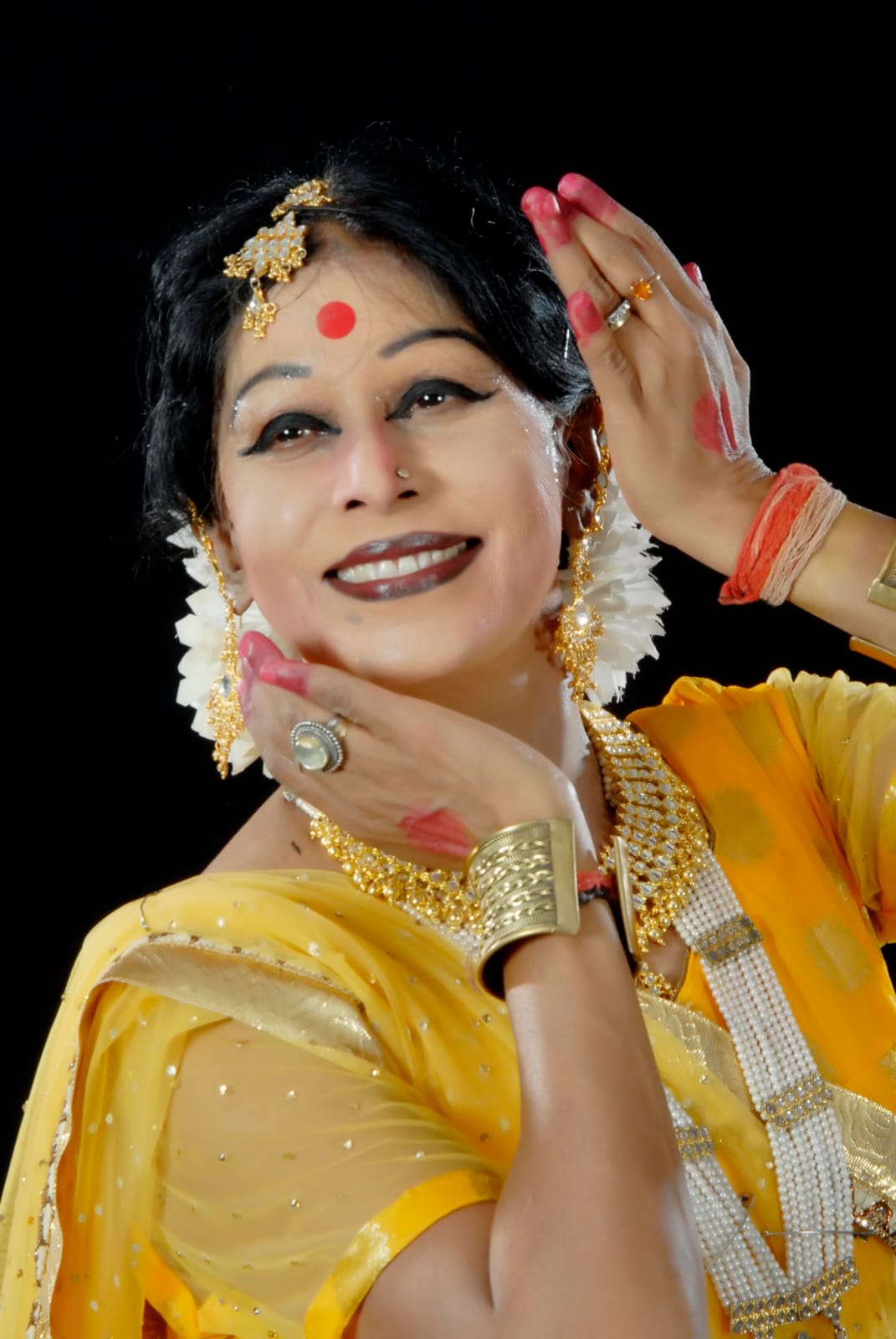Celebrated Kathak exponent Shovana Narayan was four years old when she first performed on stage. Frightened as any child would be, the now Padma Shri recipient didn't know one day, she would become synonymous with Kathak in India. The disciple of Pandit Birju Maharaj, Shovana turned 75 this year. She has beautifully blended traditional Kathak with contemporary themes drawing inspiration from literature, history, and social issues, making them relevant for the younger generation and admirable for a global audience.
With a career spanning over six decades, Shovana was recently felicitated in Delhi by her disciples around the globe. Earlier this week, Shovana performed at the 23rd edition of the Lalit Arpan Festival 'Stree Spandan: Why I Did What I Did' in Delhi. Breathing life into the concept through their solo and duet creative presentations, along with Shovana, some of the best artists of the country took centre stage in their respective traditional classical dance forms.
We got in touch with the danseuse to trace her six-decade-long journey. She reflected on how she and the dance form have evolved over the years, how she reinvents her craft to make it relevant for the younger audience, and more. Excerpts.
In the last six decades of your journey in Kathak, how have you seen the dance form evolve?
Change is the only constant as everything and everyone are constantly evolving. The presentation of Kathak as well as of all other classical dance forms also has undergone several changes. There is an increasing trend of thematic presentations. Technological development has also impacted the manner in which light design, stage sets, visuals and other ancillaries are presented. However, the beauty of the traditional solo format still retains its charm and allure.
Kathak is deeply rooted in tradition, yet contemporary interpretations are becoming popular. How do you balance the preservation of tradition with modern innovations in your performances?
No one lives in a vacuum so we all are impacted by the happenings around us. Therefore, we express through the medium that we are most comfortable in. My medium of expression is Kathak. Secondly, emotions, feelings and basic responses to situations do not change; only the outer covering changes. For example, the pranks of a little child of today and the mother-child relationship were similar to that of Krishna and Yashoda. The public humiliation of Draupadi (a reference to her cheer-haran) is also witnessed today in various parts of the globe. So, even though it seems that things have changed, in essence, nothing has changed! That's why Kathak is as relevant today as it was in decades back.
The art of storytelling through expressions, is considered one of the most difficult elements to master. How did you develop your style of Abhinaya over the years?
Abhinaya has to be lived. In other words, one has to become the character and experience the feelings and emotions of the character in various situations the character is placed in. So, for an effective and realistic portrayal, it is necessary for all artists, whether in dance or theatre, to understand the character and the situation. In Kathak, we perform ‘citra-abhinaya’ which is a visual pictorial representation. Utilizing body movements, gestures and moods, we mirror material and non-material objects. In life, moments of joy, anger or violence see the use of a flurry of movements of the body and the feet, and at various tempos and speeds depending on the intensity of the situation. This is reflected in dance renditions. It is also about a lot of practice and observation that helps master this art of expression.
As a veteran performer, how do you maintain the physical and emotional endurance required for such an intricate and expressive dance form, especially as it requires lifelong dedication?
I live and breathe Kathak for it is my soul, my breath. Therefore, it is part of my being - mentally, physically and spiritually.
Many classical dance forms have faced challenges in gaining attention, especially in the 21st century. What do you think needs to be done to sustain interest in Kathak among the younger generation?
People desire materialistic gains, to be a ‘world citizen’ and to have recognition at any cost. In this process, many seem to be plagued with a sense of inner imbalance as they are not at peace within. The profit of Kathak includes imparting a sense of balance, inner peace, and physical, mental and spiritual fitness, besides being ‘world citizens’. We need to build a strong foundation to sustain longer. A weak foundation will only create a nation with people made of cards. Classical artists including Kathak artists have always been forthcoming in partnering such movements and efforts. As already stated earlier, Kathak is not petrified. It is constantly evolving and therefore dance renditions are also moving with the times, making it interesting and attractive to the viewers, without compromising on its ethos and spirit.

Could you share a particular performance or moment in your career that was especially meaningful or transformative for you as an artist?
Two events helped me in my development and were transformative. One was my first stage appearance close to the age of four, for it helped me to get over my stage fright. The second was at a performance in Mumbai) that helped me understand the difference between what is taught and what the stage demands without forsaking the purity, spirit and ethos of the dance form.
Kathak has historically been performed in royal courts and has connections with both Hindu and Mughal influences. How do you interpret and convey this rich history through your performances today?
I would like to correct this perception. Kathak was and still is, a living temple dance tradition. What is seen and is popular, is the stage version of a temple tradition. My recent research was an eye-opener for me too. The royal courts patronized the Kathak community who performed ‘nritya seva’ in temples and on religious occasions, by giving them land grants, thus ensuring their survival. The picture of Kathak being a royal court performance is a construct of the colonial era and the subsequent decades. Having said this, ancient verses and Puranic legends have formed the core of our dance delineations and still form the core of our renditions. In keeping with the external fast-paced environment of today, what has become more noticeable today is a heavy tilt of fast technical pieces in dance renderings. Here again, the intelligent artists reflect the rich history and tradition of the form.
In addition to performing, you have trained numerous students. How do you see the role of a guru in shaping the future of Kathak, and how does your approach to teaching differ from when you were a student yourself?
I love to share knowledge with all my students and the world at large. In addition to imparting skills and learning in all aspects of the Kathak dance form – technical, abhinaya and theoretical aspects, exhorting them to attain perfection so that they cannot be faulted at any point in time, I also encourage my students to think, to reason, to analyze and to discuss.
Looking back at your career, what legacy do you hope to leave for the Kathak community, and what message would you give to future generations of dancers?
I have lived with the belief that there are no short-cuts in life and that the joy and bliss of one’s perspiration that comes through ‘sadhana’, dedication, passion for the dance form, going into the depth of a subject and maintaining one’s ethics and integrity, is unmatched and most invaluable.
Read more:



